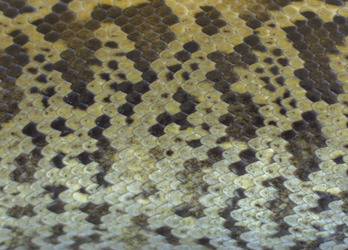Sign In
CloseThe brightest spot in this photograph is actually the eclipsed moon, as seen at 1:26am local Mountain Time on April 15, 2014, photographed in a high mountain pass near Bailey Colorado. To see the moon by itself, in a completely un-retouched/unaltered photo (except for cropping to cut down on all the extra black space) - just a couple minutes earlier, open this image: http://bylagarto.com/images/60D-2014-04-15-67-crop.jpg
The moon fully eclipsed, but I needed to get home. We drove from 4 Corners Monument starting around 4pm, and arrived home in Denver at 2:45am!
Technical details: the pincushion distortion (bent trees, lower right) is caused by the 10mm lens I used to make this image. That lens, though, allows view of amazing sky width. The close shot of the moon in the reference pic (linked above), was taken at 200mm with a different lens, and a much shorter exposure time. The bright light over the mountain in the lower left is light pollution from the Denver metropolitan area, seen to the east of this location.
Submission Information
- Views:
- 854
- Comments:
- 4
- Favorites:
- 3
- Rating:
- General
- Category:
- Visual / Photography
Comments
-
-

Photo information:
Camera: Canon Canon EOS 60D
Date and Time: 2014:04:15 01:26:00
Aperture: f/3.5
ISO Speed: 1600
Focal length: 10 mm
Exposure: 15/1 (15.000 sec)
Exposure Program: Shutter priority
Metering Mode: PatternAperture for stars: wide open, as much light as your lens will allow. Depth of field is not an issue with astral photography, as the lens is always set to infinity. Likewise on landscapes where your foreground objects are at least 20 feet away from your position, infinity focus will get everything sharply focused.
Wind is your enemy on time exposures, as are rumbling trucks if you are on a bridge or other unsteady ground. Sturdy tripod, steady hand (or a remote release), and other techniques will improve your photos. And most important of all, get good glass. Cheap lenses distort bright points of light much more severely than quality lenses.
Happy hunting!
-
-

Yeah I usually do go around 2.8-3.5 but for some reason on my prime lens that can go to f1.8 when I set it to infinity stars get a tiny bit out of focus and it has to be just a tiny bit less than infinity which I have trouble getting. I usually do iso 100 and a longer exposure (like 25 seconds and up) but that's because I have a really small sensor (nikon j1 :/ ) and things get noisy as heck.
-

The higher ISO settings will allow you to get more "exposure" with less light, at the peril of adding graininess to the image. The longer the lens stays open, the more chance there is for wind to move the camera. Fortunately, stars are patient subjects, so you can try all evening to get a great image - using different settings.
APS size sensors are not a problem for resolution, ULTRA megapixelage is useful only for billboard size prints or extreme cropping.
Your lens has a backfocus problem if infinity is not infinity. This can be adjusted by a bench technician, but usually it's cheaper to buy a new lens and sell the old one - and check the focus capabilities of the new glass before your return period expires, especially if buying a lens online. Read more about back focus problems with lenses on a google search.
-




Link
bl1p
What f stop do you use for stars? I tend to go for higher ones because I have a hard time getting stars in focus with my camera. This looks pretty fast though, like I don't see any movement in the stars, but the trees and the stars are both nicely focused... also what iso?